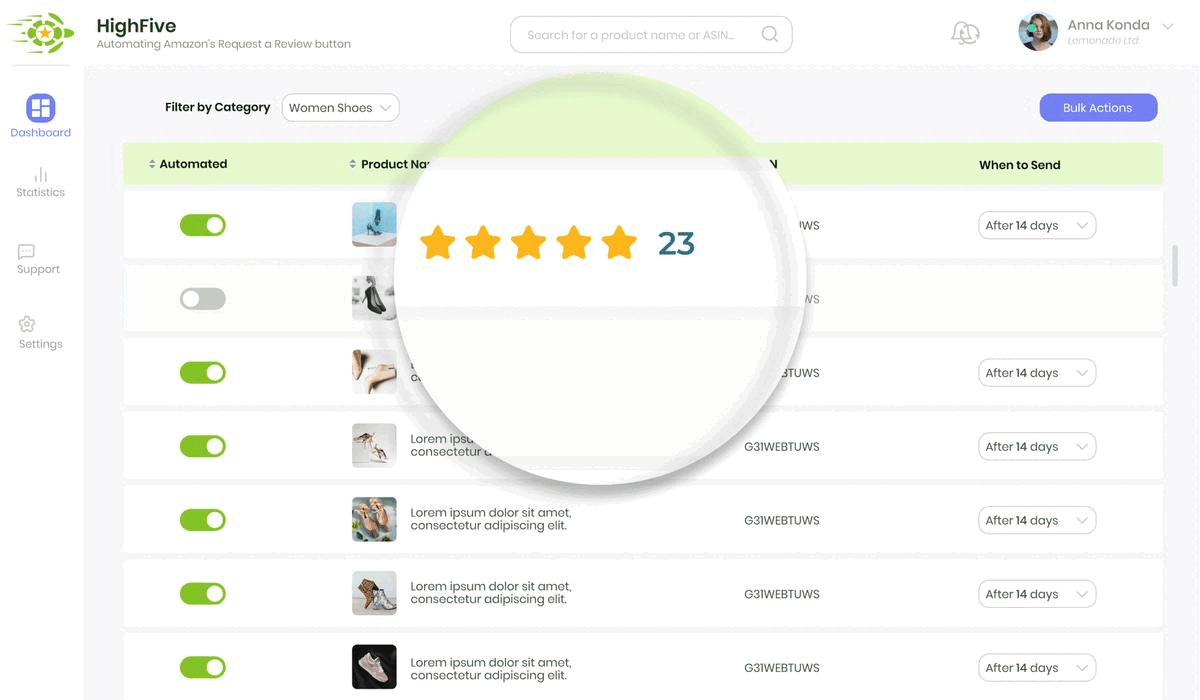Precise ROAS plays a pivotal role in the profitability of an advertising campaign. And not just any ROAS, mind you, but one that hovers around the magic number: 5. Much like a tightrope walker, one must maintain a perfect balance to avoid the precipice of deficit and reach the safe ground of profit.
Yet, the story doesn't end there. A smaller profit margin doesn't just demand a higher ROAS—it necessitates it. The smaller the margin of profit, the finer the line between success and failure. The stakes are high, but so are the rewards.
As we navigate this intriguing interplay, remember that while numbers and data may guide us, it's the story that truly matters. The story of understanding, adaptation, and, ultimately, success.
Let's explore this intricate landscape and uncover the secrets to turning deficits into profits.
Tips for effective Amazon sellers
- Understand your costs: Always be aware of your total monthly costs, including product costs, operational expenses, and advertising.
- Know your sales: Keep track of your monthly sales and understand how they compare to your costs.
- Monitor your profit margin: If your costs exceed your sales, you have a negative profit margin. Constantly monitor this to ensure profitability.
- Address deficits: If you’re running at a deficit, consider strategies like ad campaigns to help make up the difference.
- Use advertising: Amazon ad campaigns can be a great way to increase sales and visibility.
- Understand ROAS: Return on Ad Spend (ROAS) is a crucial metric for understanding the effectiveness of your ad campaign.
- Aim for a higher ROAS: In the case of a deficit, you need a higher ROAS to break even and start making profit. The aim should be an Amazon ROAS of around 5.
- Adjust based on profit margin: If your profit margin is small, you’ll need a higher ROAS to succeed. Adjust your strategies accordingly.
- Experiment with different strategies: Don’t be afraid to try out different advertising strategies to see what works best for your product.
- Track ACOS: Amazon Advertising Cost of Sales (ACOS) is another important metric. Learn how to determine the most profitable ACOS for your product.
- Optimize product listings: Ensure your product listings are optimized with relevant keywords to increase visibility.
- Use Amazon’s tools: Amazon offers various tools and resources to help sellers, make use of them to improve your sales.
- Continually analyze your performance: Regularly review your sales, costs, ROAS, and ACOS to identify areas for improvement.
- Be patient: Success on Amazon doesn’t happen overnight. Be patient and persistent.
- Stay informed: Keep up with the latest trends and changes on Amazon to stay ahead of the competition.
- Seek expert advice: Don’t hesitate to seek expert advice or guidance if you’re unsure about something. There are numerous resources and communities available for Amazon sellers.
Achieve a 5 ROAS on Amazon Ads
The ROAS metric can be incredibly useful if you know how to use it. Because it’s a direct measurement of your revenue compared to your spending, you can use this figure to determine whether your ads are generating revenue. If your ROAS is low, your ads are not particularly effective.
A low ROAS should act as a signal that your marketing campaign needs to change. For instance, is your keyword selection not sufficient? Should you work on keyword targeting?
How to Use Amazon ROAS to Your Advantage
The answer depends on your product’s profit margins. If you consider the cost of shipping, Amazon fees, and production, and compare these figures with your monthly profits, you will get an idea of your profit margin.
Let’s say your monthly costs are $100, and your monthly sales equate to $50. The profit margin is negative $50. If you have a deficit, an ad campaign can help you make up the difference.
In this case, you will need an Amazon ROAS of around 5 in order to get rid of your deficit and make a profit from your advertising campaign. A smaller profit margin requires a higher ROAS in order to be successful.
